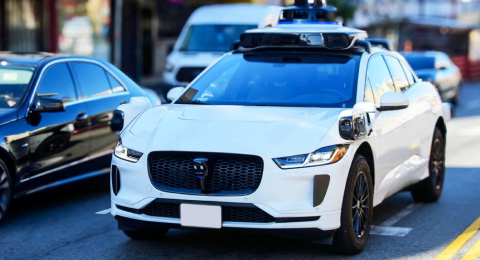
There will be a point where everything will be dependent on mobile apps. At Least we can imagine. Whether it is shopping, entertainment, finances, News, communication, mobile applications are preferred as a convenient way to do everything. Besides, using a mobile application is kind of a trend. Organizations can make the best utilization of the trend, but before businesses will call attention mobile app development guide that demonstrates the right approach.
- What is Mobile App Development?
- Platforms Mobile Apps are Built For
- Types of Mobile App Determined By Development Process
- How to Choose an Appropriate Mobile App Development Platform?
- Broach Strategies For Mobile App Development
- Business’s Use Case for Mobile App Development
- Matters to be Taken Sustenance in Mobile App Development
- Bottom Line: Always Follow the Right Approach
What is Mobile App Development?
Mobile app development is a collection of procedures to develop an application for a wireless smart device like a mobile phone or any portable device, which aims to carry through a particular task or set of tasks. App development aims to take advantage of a particular device’s features. It follows a specific set of activities like ideation, designing, building, testing, optimizing, and deploying.
The process of mobile app development varies with the purpose of the business, outcomes expected, technologies selected, and other factors. Nevertheless, there is a basic process that every business must follow for success. In the blog, we will be discussing the right approach for development and everything relatable to that process. Let’s start with the platforms present for mobile apps.
Platforms Mobile Apps are Built For
Mobile applications or widely known as the app, are intended to run on a particular device like mobile phones, tablets, wearables, etc., all of which can be supported by different Operating Systems. There are numerous systems that have been developed to support apps like Android, iOS, Blackberry, Linux, Bada, Symbian, etc. However, the most widely used Operating Systems are Android and iOS, globally.
Here is the stat that shows the December 2020 to December 2021 market share of the operating Systems. Android is contributing the most.

Source: (StatCounter)
Types of Mobile App Determined By Development Process
Mobile applications also have broad classification with the type they are developed. They are developed for certain purposes like gaming, entertainment, productivity, e-commerce, etc. Earlier mobiles apps used to fulfill a single purpose which now has been evaluated to serve to multitask and that too served on their desired devices. The several categories of apps furnish significant purposes compatible with specific devices.
The two broad categories of mobile apps are native apps and web apps extensively preferred for different purposes. The categories also include hybrid apps, cross-platform apps, progressive web apps. Native apps are developed for a certain device like Android or iOS, utilizing device features and built with a distinguishing codebase.
On the other hand, web apps are designed to be compatible with the web browsers with the look and design of a mobile app. Hybrid apps built with a common code amicable for multiple devices. Amongst these devices, application development has to choose the categories that it has to rely on. Let us learn now how to choose the app that better fits objectives.
How to Choose an Appropriate Mobile App Development Platform?
As multiple platforms are available for mobile app development, it becomes a daunting task to choose that executes the intentions. However, we will be choosing the app, keeping in mind the motives of the business. Here are a few points that comply with an app developed.
- Ideate the purpose of the app and the audience that it’s going to target it with.
- Study audiences’ nature, their choices, convenience, and future expectations.
- Focus on the friendly usability of the app focusing on the design, functions, look.
- Calculate the cost that you devoured and the desirable methods you must be spent on.
- Plan the time of development, resources used, and technologies for the app development
- Security, management, advantages, and disadvantages of the mobile application must be considered.
All these points will help ideators to rightly choose the platform that fits like a glove in hand. These become more imperative when the app has to perform for a business.
Now we know the fundamentals of app development. It’s time that we dive into our main motive of the blog for mobile app development.
Broach Strategies For Mobile App Development
Mobile apps already boast an impressive capacity to run a business implying portable methods. So here is the right approach a business can start with mobile app development.
Value Proportion
The foremost step for a business is to plan a value to develop an app. Defining objectives that a business aims for through an app is necessary. Although business through an application sounds too competitive, a business idea with a unique value proposition executed with the finest strategies isn’t an impossible target.
The value proposition is like a choice that engages consumers to a business out of numerous choices. So it has to be specific, and it has to be better than others. Also, it has to be fulfilled proficiently. It even has to be shown with a better appearance like the app’s catchy phrases, brand name, logo, and theme.
Here we have two examples that flaunt their services and motive masterly within an app.
For example,
Uber
Uber aims to provide utter convenience to its consumers by allowing them to book rides on the tap of the app on their smartphones. Not just the rides, it allows the users to pay with desired online payment method – going whole cashless. It also allows consumers to track their destination throughout the rides, access the referral benefits, promo codes, and many more. Its tag line states:
“Tap the app, get a ride.”
Social media apps give their best use cases and values to the consumers covering multiple segments. Pinterest is one example of awning gold standards for fashion, food, home, decor, and much more. Initially targeting female audiences, it now has opened the doors for any audience. It offers irresistible demographics, allows users to create pins to save and recommend relatable content, and with much more unique facilities, the business has remarkable values.
Market Research
Businesses should know what they have to compete with. The existing business models, market trends, user demands, and analysis of the future will look like are required. Knowing the market before they execute the app idea is imperative. Besides, they should also examine the business idea’s viability, strengths, hurdles, and weaknesses. Before investing a huge amount and time, market research will be helpful. It awareness a business about the risks, opportunities, and competitors.
Once you know the market and functions that are desired for the development process, one basic level of the mobile app, that version, is known as Minimum Viable Product. This version consists of basic features and functionalities serving the basic purpose of the app. Further, the feedback from the users is used to update and enhance the working of the app.
Set End Goals For App
Following the business app idea and app industry, the mobile app development procedure has to go with the plotting and planning, and setting of the business’s end goals. It includes the factors like who is gonna use the app, how the business will generate revenues, what features must be integrated to fulfill the purpose of an app.
It’s like preparing endpoints and deciding the roadmap for those endpoints.
In terms of mobile app development, it is to decide what type of mobile application has to be developed, which technologies will be used, the workflow of the app that would work, features that would be integrated into the app. In features, they have to think of the basic features and some of the standardized attributes that make the app unique and deliver soundly.
Prepare for UI / UX
The mobile app has two separate but interlinked concepts of design – user interface and user experience.
User experience is to give away a consequential experience for consumers through an app. It demands dependability, design, functions, and branding. A good design bonds between the business and users. Consumers stay connected with the attractive design causing sustainability for a business.
Simultaneously, user interface design is a set of exercises that will define the light on the style and appearance of an app. It has to be easy to use for consumers. The arrangements of the buttons, color, theme, screens, sections of the screens, etc., mattered to complement the user interface of a mobile app.
Prepare a user flow for the app, the list of the features, individual screens, and all other things that define how consumers will use the mobile application and the business would be benefited. Following that, prepare a mobile app wireframe, representing the entire flow and functions. Wireframes help a design giving it a base and reference to the actual design. They also assist the designers in eliminating the errors and misplaced design, improvising the accuracy of the final design.
Finally, craft a prototype with the tools which can be turned into clickable actions.
Start Developing
The final stage has any imperative decisions to be made up. First, pick up the best architecture and technologies for mobile app development. The standard structure involves frontend development, backend development, and Application Programming Interfaces (API).
User data is stored in the backend. It is the part developed that is attached to the backend database. Though all portions don’t need the database, it is still an important aspect of app development. Mobile backend hoards, develop, and process the data. It handles the processes of app registration, messaging, cloud storage, etc.
API interfaces have the standards that interconnect the frontend and backend of the mobile applications. It is a software intermediary that allows the users to communicate with other applications. It stores an enormous quantity of data into a functional framework on a mobile device. It proposes easy integration and fast delivery of mobile applications.
The front end is the front portion of the app visible to the users. The configuration, formation, content, the demeanor of the mobile app are all included in the mobile app frontend. It mainly concentrates on the responsiveness of the mobile application to all sizes of devices. It has to be stable for all sizes.
Well, the thing is, it is a complex task to choose the app type, technologies and develop the entire app. And also, for a non-technical person, it becomes more complex. So it is better to eliminate the knowledge friction and the task to a mobile app development company that helps and conducts the entire process of ideation, design, development, and testing.
Test and Optimize
The last one is to test the application. If required make changes, and test again. Ensure that the app fulfills all the motives. There are different kinds of texting like design testing, function testing, design testing, security testing, and a few more that need to be conducted at various phases of the development. And the final testing is for the quality assurance testing to maintain the standard attributes of the mobile app. Some imperative tests are mentioned here.
Functional Testing
Functional testing is to ensure all the specifications are justified in the app. It checks functionality so that the different users who use the app in different ways can experience commonness.
Performance Testing
Performance testing is for making sure that the planned purposes are served the right way or not. Consistency and steadiness in the performance of an app are maintained even for exceptional conditions and must get a performance check.
Design Testing
The purpose of mobile design is to get a proper flow of the app. It has to be a user-friendly design, easily attainable, and all the intended connotations are fulfilled or not.
Security Testing
A minor mistake in app development can lead to major security concerns. Data leak, hacker threat, sensitive data exposure, or many relatable security concerns must be checked before the app is launched.
Business’s Use Case for Mobile App Development
In the current era, mobile app development is a triumph. From the internet users globally, 4.66 billion, 92.6% of which are mobile internet users, as calculated in January 2021. The number mentioned above is to justify that mobile app development is Hobson’s Choice for a business. Here are some of the factors influencing a business.
Makes Effective Values
Mobile apps are the best medium to convert audiences into potential consumers. Mobile apps are preferred as a convenience over other methods. With the huge presence in the mobile app world, businesses can seek it as an opportunity to acquire a consumer base. They are providing an app that connects the users and providers efficiently. An app connects the users and providers efficiently.
Retain Consumers
Apps usually have a wide consumer base, allowing businesses to access a huge consumer base and also offers multi ways to retain consumers using a mobile application. The app can be interactive for a better user experience with the perks like discounts, promo codes, referral benefits that attract consumers. It allows the consumers to seek services and products through an app receiving loyal consumers.
Ensure Personalization
Businesses can give special attention to the consumers with the facilities like customer care, relatable suggestions, real-time updates, multiple payment methods, etc. Additionally, the advent of technologies like Artificial Intelligence revolutionized mobile app development, making it easier for businesses to associate with users and their demands expeditiously. Businesses can collect the data like past orders, locations, search history to improve the overall experience.
Easier Brand Awareness
Mobile applications specialize in making a brand look exceptional. It can exhibit the use cases like making it two-way communicable, facilitating users with workflow, intuitive design – all combined to insist consumers to the brand. As they use the app more and more, the brand will be recognized and shared with others.
Matters to be Taken Sustenance in Mobile App Development
We have seen a lot of what to do for mobile app development; now, let us also see what not to do.
- Mobile apps are direct marketing channels, but often businesses fail to make the most use of them and instead work harder with TV ads, print, email marketing, and social media marketing.
- Plan the cost of mobile app development before finalizing app development companies or freelancers; make sure you research and compare enough of them
- Differentiation from the competitors. Your app idea has to distinguish from the rest, has to be value-added, and appropriately executed with an accurate resemblance.
Bottom Line: Always Follow the Right Approach
Mobile app development is a ceaseless process. Starting from the idea, planning, execution, and testing involve many concerns. Even after its deployment, additional functionalities and texting and stabilizing the app are required. Also, the app has to be developed with the mindset that keeps the users around. Therefore, follow the right approach mentioned above to develop a mobile app.













